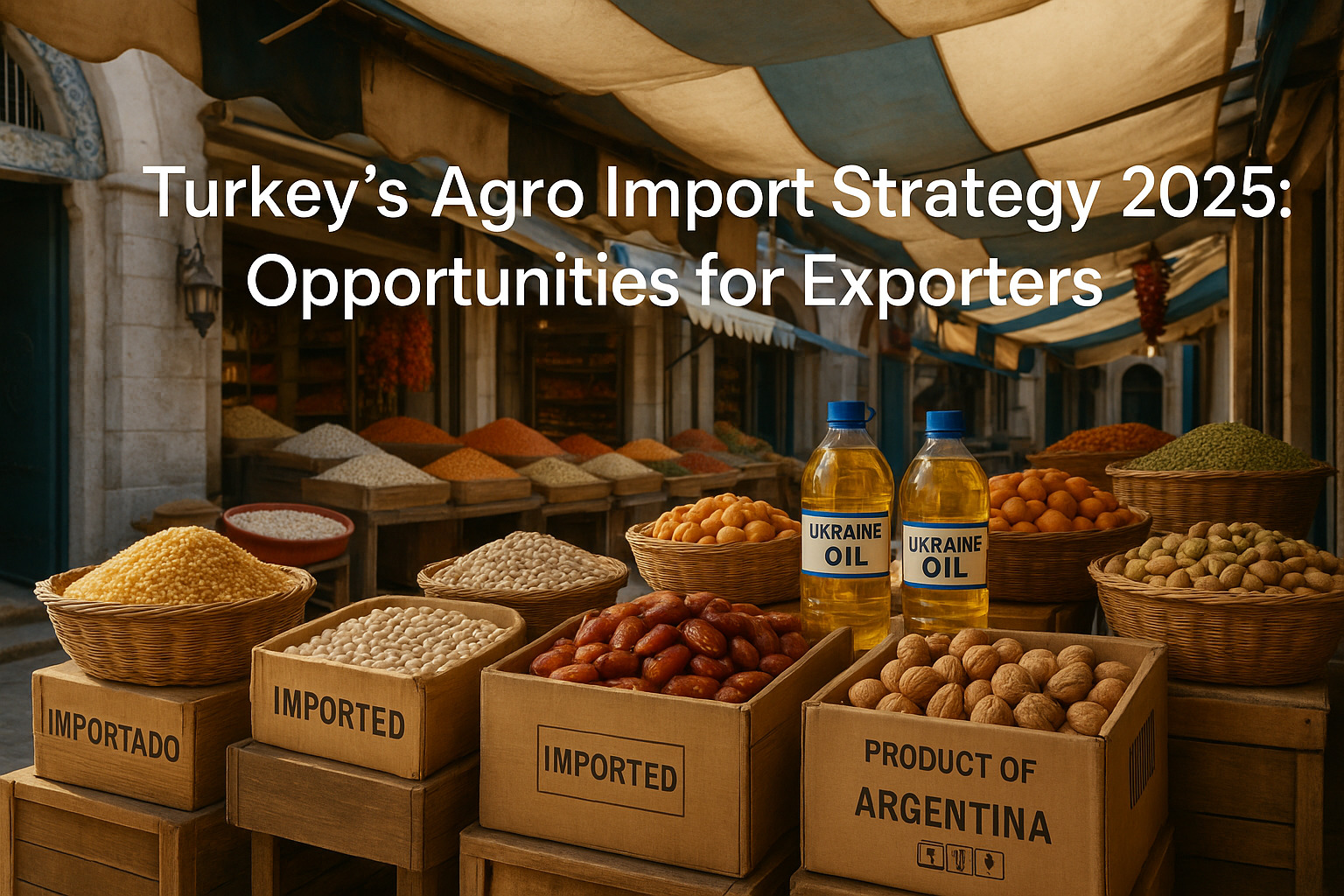Turkey’s Agro Import Strategy 2025: Opportunities for Exporters

In the 2025–26 marketing year, Turkey’s wheat production is expected to drop by about 15% to 16.3 million metric tonnes (MMT), while barley output may decline by 28% to 5.1 MMT due to severe drought in key growing regions.
As a result, wheat imports are projected to surge to around 10.3 MMT, and barley imports could reach 1.6 MMT — more than ten times the prior year’s 150,000 MT.
Turkey’s corn harvest area is forecast to grow by 12%, taking production to roughly 7.9 MMT. However, imports are expected to remain high at 2.5–3.2 MMT to meet strong feed demand from the poultry and livestock sectors.
A tariff-free corn import quota of 1 MMT with a 5% duty has been introduced, with overall quotas reaching 3.5 MMT in 2025 to stabilize domestic supply.
🚢 2. Import Policy Measures & Quotas in 2025
Turkey has repeatedly applied 0% tariff import quotas on corn throughout 2024–2025, totaling around 3.5 MMT. Out-of-quota tariffs rise sharply to 130%, making imports beyond the quota period economically unfeasible.
Wheat imports are permitted duty-free under the flour-export scheme, allowing millers to import competitively while exporting value-added products like flour and pasta — two of Turkey’s main agri-exports.
📊 3. Key Agro Products in Turkey’s Import Strategy
🌾 Wheat & Barley
Target import volumes in MY 2025–26: ~10.3 MMT wheat and ~1.6 MMT barley — a dramatic increase from ≤3.2 MMT wheat just a year earlier.
Main suppliers: Russia and Ukraine dominate both barley and wheat imports. In 2024, Turkey imported ~51,000 MT of barley from Russia and ~36,000 MT from Ukraine.
🌽 Corn
Domestic feed demand remains strong, with imports supported by the quota system. In 2024/25, Ukraine supplied around 735,000 MT and Russia about 185,000 MT.
🎯 4. What Buyers in Turkey Are Looking For
Stable supply & predictable pricing — Quotas are designed to offset domestic shortfalls and stabilize market conditions.
Strict quality compliance — Meeting sanitary and phytosanitary (SPS) requirements is essential, especially for suppliers involved in the flour-export initiative.
Turnkey sourcing solutions — Grain contracts tied to value-added export programs (flour, pasta) are highly attractive to Turkish buyers.
📋 5. Summary — Turkey’s 2025 Agro Imports
Wheat — ~10.3 MMT from Russia, Ukraine; tariff-free imports under the flour-export scheme.
Barley — ~1.6 MMT from Russia, Ukraine; imports facilitated by government intervention.
Corn — ~2.5–3.5 MMT from Ukraine, Russia; duty-free quotas (5% tariff) supporting feed demand and drought relief.
🌍 6. What Exporters Should Know
Turkey’s import demand for wheat, barley, and corn is expected to triple or more in 2025 compared to 2024.
Exporters from Ukraine, Russia, the EU, and other regions can leverage duty-free quotas to access the Turkish market.
Platforms like Agrix can help exporters by:
Connecting them with verified Turkish millers and feed buyers.
Providing documentation support for tariff exemptions under quota or flour-export schemes.
Coordinating logistics for transshipment and SPS compliance.
About Generic H2 (Embedded)
This blog post is published by Generic H2 (Embedded), an active participant on our trading platform. The content reflects company insights, product knowledge, or market trends relevant to their industry. Articles like this one help boost SEO visibility and offer valuable information for future visitors and potential partners.